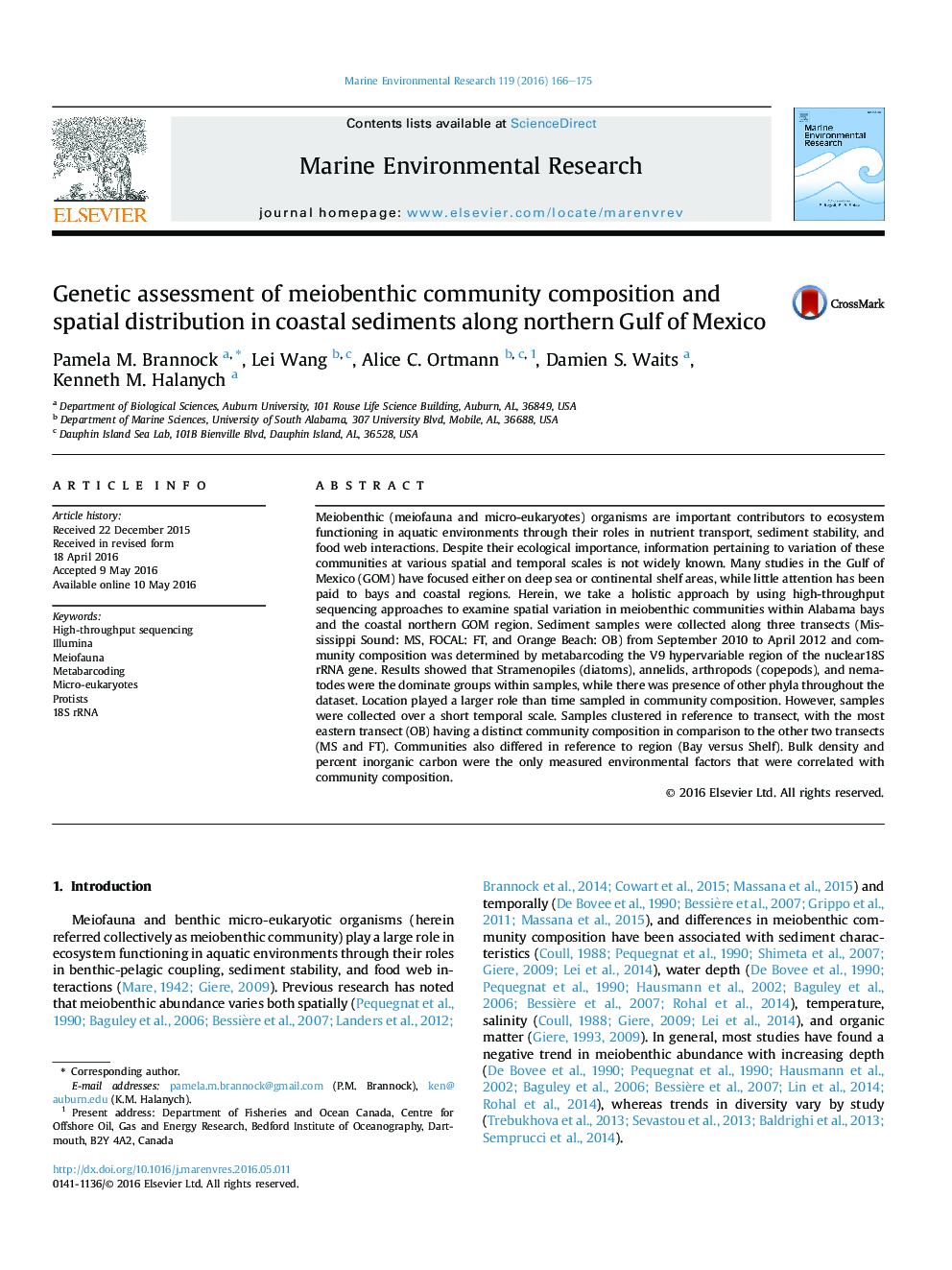| کد مقاله | کد نشریه | سال انتشار | مقاله انگلیسی | نسخه تمام متن |
|---|---|---|---|---|
| 6387579 | 1627564 | 2016 | 10 صفحه PDF | دانلود رایگان |
- Holistic approach to diversity and variation in meiobenthos through metabarcoding.
- Mobile River Basin influence accounts for similarity in community composition.
- Diatoms, annelids, copepods, and nematodes dominate northern GOM meiobenthos.
- Within major taxonomic groups, dominant families varied with location.
- Bulk density and percent inorganic carbon were correlated with community composition.
Meiobenthic (meiofauna and micro-eukaryotes) organisms are important contributors to ecosystem functioning in aquatic environments through their roles in nutrient transport, sediment stability, and food web interactions. Despite their ecological importance, information pertaining to variation of these communities at various spatial and temporal scales is not widely known. Many studies in the Gulf of Mexico (GOM) have focused either on deep sea or continental shelf areas, while little attention has been paid to bays and coastal regions. Herein, we take a holistic approach by using high-throughput sequencing approaches to examine spatial variation in meiobenthic communities within Alabama bays and the coastal northern GOM region. Sediment samples were collected along three transects (Mississippi Sound: MS, FOCAL: FT, and Orange Beach: OB) from September 2010 to April 2012 and community composition was determined by metabarcoding the V9 hypervariable region of the nuclear18S rRNA gene. Results showed that Stramenopiles (diatoms), annelids, arthropods (copepods), and nematodes were the dominate groups within samples, while there was presence of other phyla throughout the dataset. Location played a larger role than time sampled in community composition. However, samples were collected over a short temporal scale. Samples clustered in reference to transect, with the most eastern transect (OB) having a distinct community composition in comparison to the other two transects (MS and FT). Communities also differed in reference to region (Bay versus Shelf). Bulk density and percent inorganic carbon were the only measured environmental factors that were correlated with community composition.
Journal: Marine Environmental Research - Volume 119, August 2016, Pages 166-175
